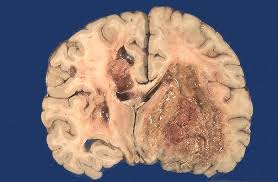Glioblastoma Multiforme (GBM) is the most aggressive and common type of malignant brain tumor in adults. Classified as a grade IV astrocytoma, GBM originates in the glial cells and rapidly infiltrates surrounding brain tissue. Due to its fast progression and complex nature, early detection and effective management are crucial.

Causes and Risk Factors
While the exact cause of GBM remains uncertain, several risk factors have been identified:
- Genetic Mutations: Alterations in genes like EGFR, TP53, and IDH1 are commonly linked to GBM development.
- Age: GBM predominantly affects individuals over 50 years old.
- Gender: Males are more frequently diagnosed than females.
- Exposure to Radiation: Individuals with previous cranial radiation therapy have an increased risk.
- Family History: Genetic predisposition can elevate susceptibility.
Symptoms of Glioblastoma Multiforme
GBM symptoms often mimic other neurological conditions. Common signs include:
- Persistent headaches
- Seizures
- Nausea and vomiting
- Cognitive impairment
- Personality changes
- Vision disturbances
- Muscle weakness or paralysis (usually on one side of the body)
Diagnosis of GBM
Diagnosing GBM involves multiple imaging and laboratory tests:
1. Magnetic Resonance Imaging (MRI)
- Utilizes contrast agents like gadolinium to reveal tumor location, size, and vascular properties.
2. Computed Tomography (CT) Scan
- Provides a detailed view of brain structure to detect abnormalities.
3. Biopsy
- A neurosurgical procedure to extract tissue samples for pathological analysis.
4. Molecular Testing
- Identifies genetic mutations such as MGMT promoter methylation, IDH mutations, and EGFR amplifications to tailor treatment plans.
Treatment Options for GBM
Effective GBM management requires a multimodal approach, combining surgery, radiation, and chemotherapy.
1. Surgical Resection
- Primary method for tumor debulking to alleviate pressure and enhance subsequent treatments.
- Complete resection is challenging due to tumor infiltration in healthy brain tissue.
2. Radiation Therapy
- Post-surgery radiotherapy targets remaining cancer cells, typically delivered over several weeks.
3. Chemotherapy
- Temozolomide (TMZ): The standard chemotherapy agent for GBM, often combined with radiotherapy.
- Bevacizumab: Used to inhibit tumor blood vessel growth.
4. Targeted Therapy
- Drugs designed to block specific molecular pathways driving tumor growth.
5. Tumor-Treating Fields (TTFields)
- A non-invasive therapy using electric fields to disrupt cancer cell division.
Prognosis and Survival Rates
GBM has a poor prognosis due to its aggressive nature. The average survival time post-diagnosis is 12-15 months, with less than 10% of patients surviving beyond five years. Prognostic factors include age, tumor size, extent of resection, and molecular profile.
Emerging Treatments and Research
Research on GBM is actively exploring novel therapies such as:
- Immunotherapy: Leveraging the immune system to combat tumor cells.
- Gene Therapy: Introducing genetic modifications to target GBM pathways.
- Personalized Medicine: Tailored treatment plans based on individual tumor genetics.
Coping and Support
Living with GBM can be physically and emotionally challenging. Support systems such as counseling, support groups, and palliative care can significantly improve the patient’s quality of life.
Glioblastoma Multiforme remains one of the most challenging cancers to treat. Early diagnosis, comprehensive treatment strategies, and participation in clinical trials offer patients the best chance of improved outcomes. Ongoing research continues to provide hope for advancements in GBM management.

